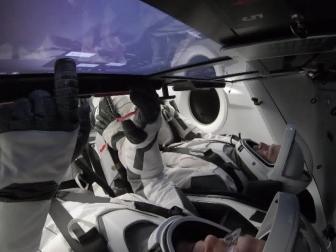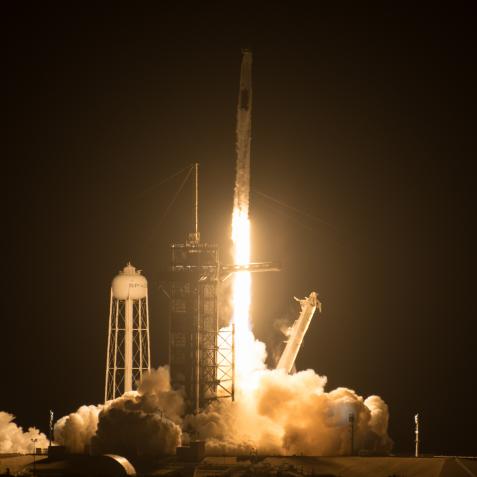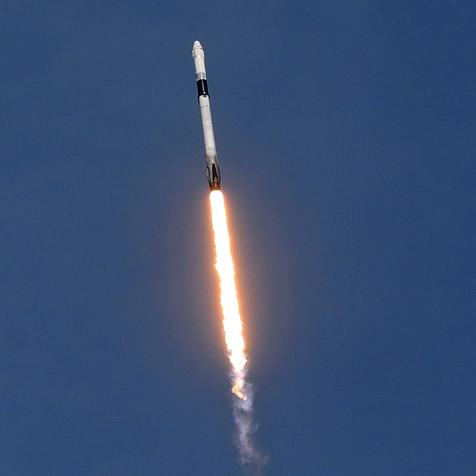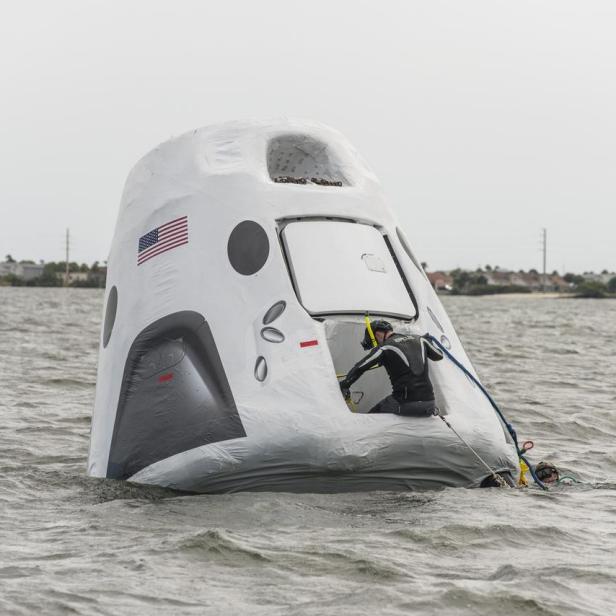
SpaceX/NASA
10 Facts About NASA’s SpaceX Demo-2 Splashdown
Here's everything you need to know about NASA astronauts Bob Behnken and Doug Hurley's return home from the International Space Station on Sunday, August 2.
NASA and SpaceX came together for a historic mission to launch two NASA Astronauts into space on May 30, 2020. After proving the success of SpaceX’s human spaceflight system and spending two months at the International Space Station (ISS), it's time for Bob Behnken and Doug Hurley to splashdown in the Atlantic Ocean. Watch SPACE LAUNCH LIVE: SPLASHDOWN on Discovery and Science Channel on August 2 starting at 1PM ET.
In the meantime, here's what you need to know leading up to the historic return on August 2 according to NASA.
1. Where in the Atlantic Ocean could NASA Astronauts Behnken and Hurley splashdown?

Gio Banfi
There are seven potential splashdown sites for the Crew Dragon off the coast of Florida: Pensacola, Tampa, Tallahassee, Panama City, Cape Canaveral, Daytona, and Jacksonville.
2. How is the final splashdown location selected?
The splashdown site is chosen based on the time of departure from the ISS on August 1, orbital mechanics, and weather patterns.

JPL/NASA
3. How long is the trip home?
The journey from the ISS to Earth can take anywhere from six to thirty hours--It all depends on what time the Crew Dragon undocks from the station and which splashdown site meets NASA and SpaceX’s criteria.
4. What happens during the return to Earth?
“There will be two very small engine burns immediately after hooks holding Crew Dragon in place retract to actually separate the spacecraft from the station. Once flying free, Dragon Endeavour will autonomously execute four departure burns to move the spaceship away from the space station and begin the flight home. Several hours later, one departure phasing burn, lasting about six minutes, puts Crew Dragon on the proper orbital path to line it up with the splashdown zone. Shortly before the final deorbit burn, Crew Dragon will separate from its trunk, which will burn up in Earth’s atmosphere. The spacecraft then executes the deorbit burn, which commits Crew Dragon to return and places it on an orbit with the proper trajectory for splashdown.”
5. How fast will the Crew Dragon be moving?
The Crew Dragon will be flying at about 17,500 miles per hour. Upon re-entry, the capsule may heat up to 3,500 degrees. There will be about a six-minute communication blackout between Crew Dragon and Earth. This is normal.
6. Are Parachutes Involved?
The Crew Dragon has two sets of parachutes. These sets will deploy at different altitudes, 18,000 feet and 6,000 feet, to slow down the capsule when it enters the Earth’s atmosphere.
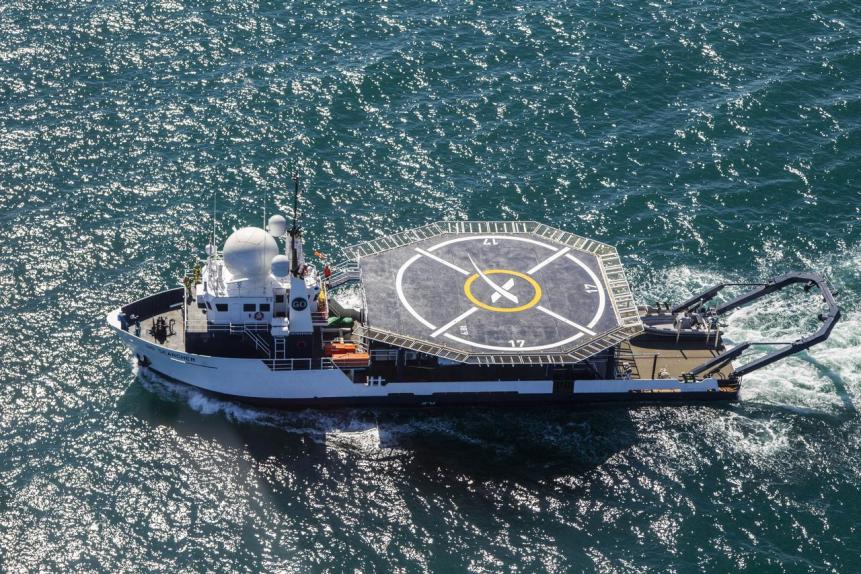
SpaceX/NASA
SpaceX rehearses helicopter landing and patient loading on its recovery ship, GO Searcher. The company outfitted the ship with a medical treatment facility and a helipad in the center of the vessel. When astronauts splash down into the ocean after their journey to the International Space Station on SpaceX’s Crew Dragon spacecraft, NASA and SpaceX doctors will work together to evaluate the crew onboard the vessel. Should astronauts need to be airlifted to a hospital, the helicopter also will pick up paramedics and doctors from the ship who will care for the astronauts in-flight.
7. What happens after the Crew Dragon splashes down?
NASA and SpaceX personnel will be at the splashdown site to recover the capsule from the ocean and welcome NASA Astronauts Bob Behnken and Doug Hurley home. There will be two recovery ships in separate locations. On each ship there will be spacecraft engineers, trained water recovery experts, medical professionals, NASA cargo experts, the ship’s crew, and others to help with the recovery.
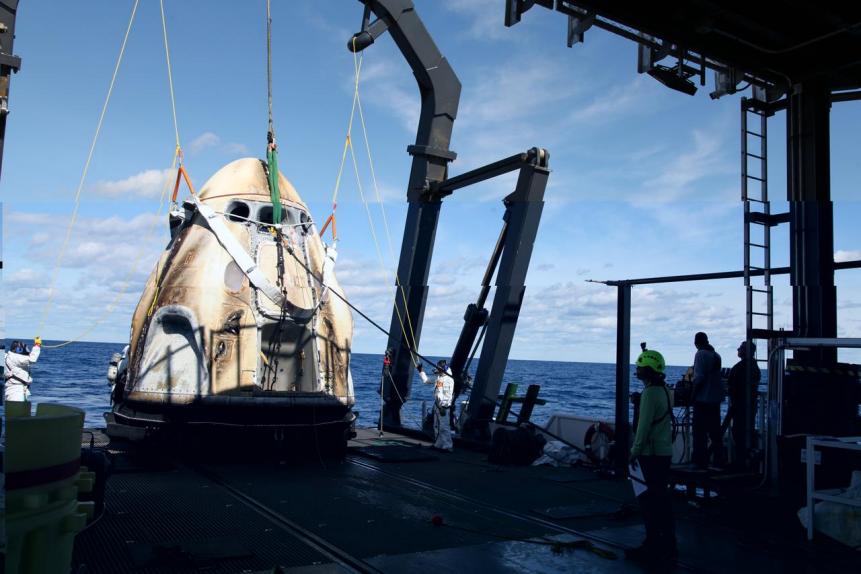
SpaceX/NASA
SpaceX’s Crew Dragon is loaded onto the company’s recovery ship, Go Searcher, in the Atlantic Ocean, about 200 miles off Florida’s east coast, on March 8, after returning from the International Space Station on the Demo-1 mission.
8. How long will it take for NASA Astronauts Behnken and Hurley to exit the capsule?
It will take about 45 minutes to an hour for Bob Behnken and Doug Hurley to emerge from the capsule. SpaceX personnel will deploy on two fast boats from one of the main ships. The first boat is responsible for checking the capsule integrity, air quality around the Crew Dragon, and preparing the spacecraft for recovery by the main ship. The main ship will be hoisting the capsule out of the ocean and onto the deck. After the capsule is secure, the hatch will be opened. The second boat will be busy recovering Crew Dragon’s parachutes.
9. What happens afterwards?
The NASA Astronauts will be examined by medical professionals. They will return to shore by ship or helicopter. Once back on land, Behnken and Hurley will board a NASA plane to Houston, Texas.
10. Where does the Crew Dragon capsule go?
The Crew Dragon capsule will be sent to the “SpaceX Dragon Lair” in Florida for inspection and processing.
Watch SPACE LAUNCH LIVE: SPLASHDOWN on TV or stream it live on Discovery GO. Follow Discovery on Facebook, Instagram, TikTok and Twitter for the latest updates and join the conversation on social media by using the hashtag #Splashdown.
More on the Splashdown
What to Know About the Splashdown to Earth
A spacecraft full of humans is going to crash on the Earth and that’s okay. What goes up, must come down. At least, that’s what the saying is. And in the case of the historic NASA/SpaceX crewed mission to the International Space Station, it’s true.
Don't Miss Space Launch Live: Splashdown on August 2 00:30
Follow NASA astronauts Bob Behnken and Doug Hurley as they splash down to conclude their mission from the International Space Station. Watch Space Launch Live: Splashdown starting at 1PM ET/10AM PT Sunday, August 2 on Discovery.










